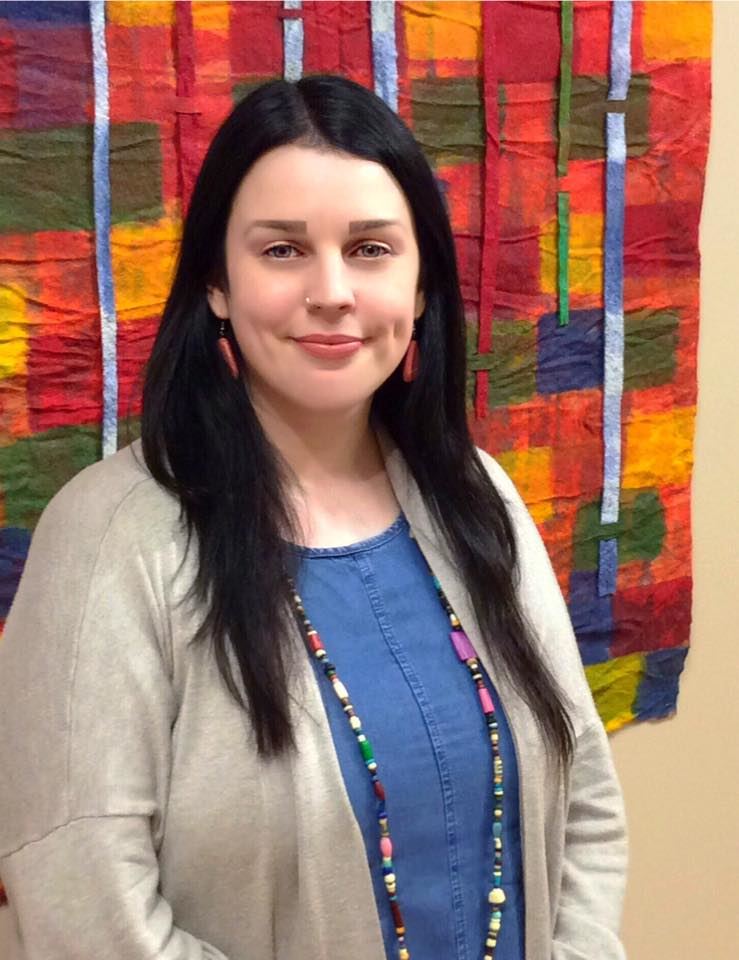On Hip-Hop, Identity, and Disrupting Museum Spaces
By Laura Perez
As Director of Education and Programs for Prince George’s African American Museum and Cultural Center (PGAAMCC) – a community-based institution that celebrates Black art, history, and culture in Prince George’s County, Maryland and makes connections regionally, nationally, and internationally/Diasporically – I have the opportunity to incorporate the arts into a museum space via PGAAMCC’s public and education programs. I’m fortunate to work at an institution that centers identity and intersectionality and is intentional in the language that we use and the stories that we tell. With this foundation, we have been able to create successful arts-based and arts-integrated programs that are both timely and relevant to our audience.
PGAAMCC’s education programs, which incorporate visual art, performance art, music, and creative writing, are facilitated in over 70 schools in Prince George’s County and the DC Metro Area. Our public programs, which include everything from panel discussions and artist talks to film screenings, festivals, and album release parties – redefine the way in which Museums have traditionally engaged with the art world. We intentionally call into question what is considered “high art” and aim to create a space that allows for artistic and cultural exchange across genres and disciplines, without the interruption of respectability politics.
For me, this work is also personal. In addition to being a museum professional, I am also an emcee and lifelong lover of hip-hop. Incorporating creative writing, hip-hop, and poetry into museum programs has been, in my experience, an effective method for sharing content in new ways as well as and expanding an institution’s audience. Hip-hop is a musical genre steeped in allusions; it’s easy to find songs that make reference to a wide range of museum-relevant subjects including Black and Latinx history, social justice movements, politics, current events, and works of literature and art. But even more importantly, hip-hop is an art form that emphasizes the importance of identity and authenticity.
The current reality in America, in which blatant displays of racism, homophobia, xenophobia, Islamophobia, etc. are becoming increasingly socially acceptable, is just a more overt display of what has existed in this country since its founding. The irony is, that in the midst of this increase, the appropriation and consumption of Black culture by mainstream America is at an all-time high. Black culture is consumed for entertainment and profit, while Black lives are criminalized and disregarded. There is an extreme level of cognitive dissonance needed to know the words to every Rihanna song while also firmly believing that the officers who killed Sandra Bland and Rekia Boyd are guilty. But this is the reality that we live in now. As such, it is critical that we emphasize the importance of cultural literacy and intersectional thinking when discussing the art that we love and the music we celebrate.
For museum and arts professionals, there is no better opportunity to promote healthy identity development and appreciation for, rather than appropriation of, culture. By utilizing the performing arts in museum spaces – whether that be hip-hop, theatre, storytelling, or beyond – we are able create opportunities for audiences to learn more about themselves, to interrogate their own identities and belief systems, and to ensure that their love for an art form is parallel to their level of respect for the community or communities that created it. Furthermore, we are able to celebrate the art forms, histories, and stories that are often disregarded due to a privileging of other narratives. Ultimately, when we acknowledge the origins of museums as colonized spaces and recognize that history can be both beautiful and horrible, it becomes apparent that arts integration in the museum space must be done thoughtfully and holistically to not only tell the full story, but to also ask the right questions. 
This article can be found in Fall 2017 - "How Do We Tell Difficult Stories in Our Institutions?" (Volume 27, Issue 4) of IMTAL Insights.

ABOUT THE AUTHOR:
 Laura Perez is a lyricist, educator, fundraiser, and advocate for the arts with eleven years of experience working with educational institutions, museums, non-profits, and the Washington, DC hip-hop and poetry communities; she specializes in program design and management, arts integration, and cultural competence. Laura earned a Bachelor of Arts in English and a Master of Arts in African American Literature at Howard University, focusing her research on cultural hybridity and shifting identity within contemporary literary works of racial satire. Following graduation, she designed and led a District of Columbia Public Schools sponsored course that intertwined hip-hop with issues of social justice and identity. She then went on to serve as Program Director of the American Poetry Museum in Washington, DC. Currently, Laura is the Director of Education and Programs at Prince George’s African American Museum and Cultural Center in North Brentwood, Maryland and continues to design and implement programs that make connections between the arts, history, culture, social justice, and identity.
Laura Perez is a lyricist, educator, fundraiser, and advocate for the arts with eleven years of experience working with educational institutions, museums, non-profits, and the Washington, DC hip-hop and poetry communities; she specializes in program design and management, arts integration, and cultural competence. Laura earned a Bachelor of Arts in English and a Master of Arts in African American Literature at Howard University, focusing her research on cultural hybridity and shifting identity within contemporary literary works of racial satire. Following graduation, she designed and led a District of Columbia Public Schools sponsored course that intertwined hip-hop with issues of social justice and identity. She then went on to serve as Program Director of the American Poetry Museum in Washington, DC. Currently, Laura is the Director of Education and Programs at Prince George’s African American Museum and Cultural Center in North Brentwood, Maryland and continues to design and implement programs that make connections between the arts, history, culture, social justice, and identity.